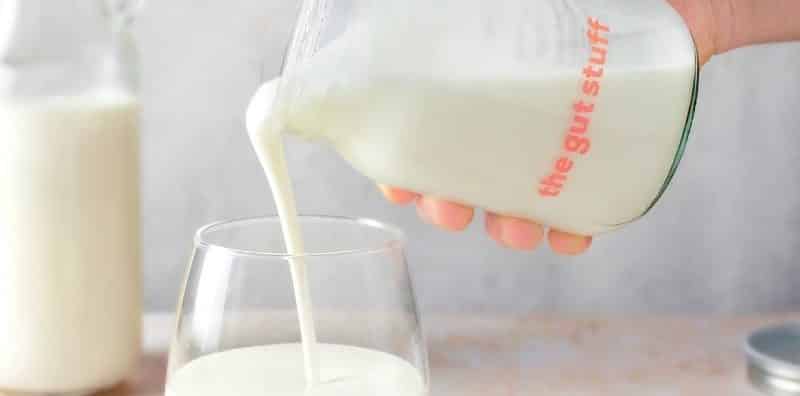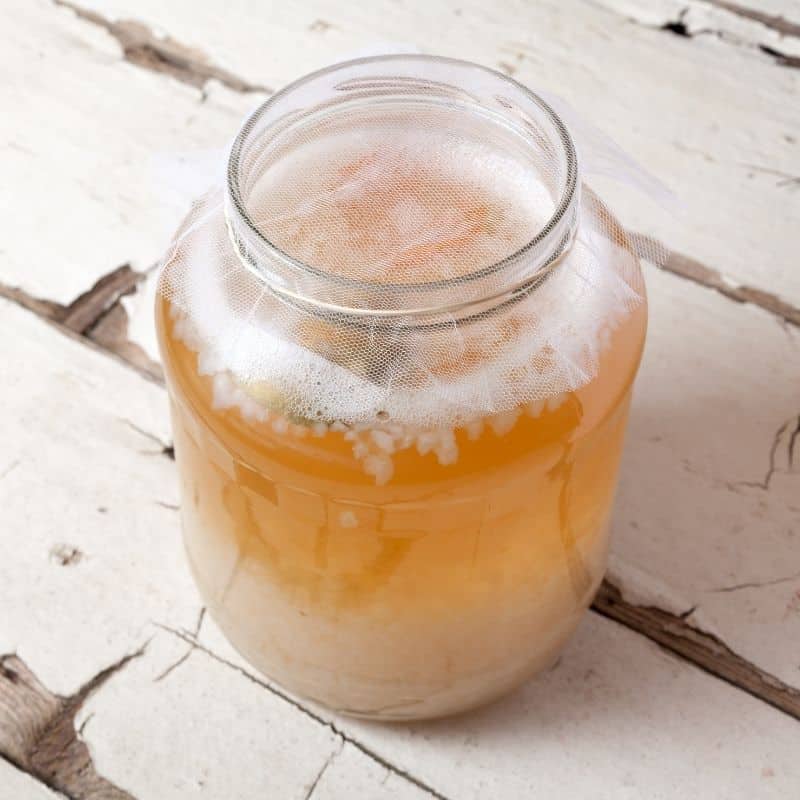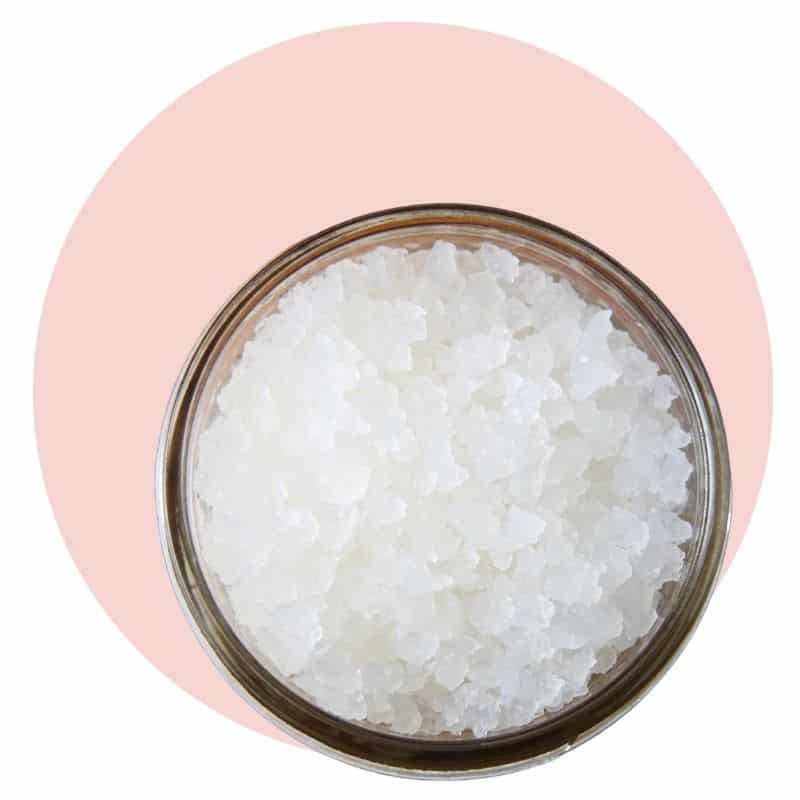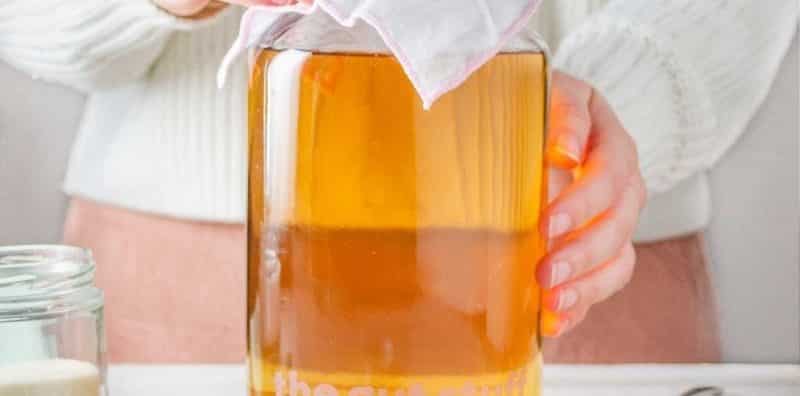
how to make water kefir

meet the ferment*…
history: The exact origins of water kefir grains (also known as ‘tibicos’) are unknown. They were documented from the late 1800s, but are speculated to have been around much longer. The origin most likely points to Mexico where water kefir grains were harvested from the Ountia cactus.
what is it ? Water kefir is a fermented, naturally carbonated drink, produced by culturing water using water kefir grains and sugar.
flavour: Semi-tart, mildly zesty and sweet
Water kefir grains are clusters of bacteria and yeast with a clump-like appearance. The bacteria and yeasts in the grains utilise the sugar in water kefir to produce lactic acid, carbon dioxide and a small amount of ethanol.
ingredients
30g water kefir grains
20g cane sugar
800ml filtered water (room temperature)
equipment
(included in our All in One Fermentation Kit)
1L jar
gauze
other equipment
rubber band
sieve
wooden or plastic spatula
jug
clip top bottle

method
- Wash your jar in hot soapy water, then place it in the oven at 100°C for 15-20 mins to sterilise it, then leave to cool.
- Add the sugar to the 1L jar, followed by the water, stir until the sugar has completely dissolved. Then proceed to add the water kefir grains.
- Gently stir the liquid once more to distribute the microbes throughout, then cover the jar with the gauze and secure it tightly with a rubber band. Set the jar aside on a countertop for 48 hours at room temperature, keeping the jar away from direct sunlight.
- After 48 hours, strain the grains out of the mixture using a sieve.
- Bottle your brewed kefir water into a clip top bottle then either store in the fridge or leave it out for another 48 hours to carbonate further.
- Place the water kefir grains back into your fermentation jar and repeat the process to make a fresh batch of water kefir.
storage
Store in the fridge for up to a month unopened. Once opened, best consumed within 30 days.
“gaahhh” confused? need help?
Without the sugar there is no fermentation. The sugar in water kefir is what the culture feeds on as it ferments. As it does so, the kefir grains consume the sugars and convert them to lactic acid and carbon dioxide. You can use less sugar than the recipe recommends, but we don’t suggest going below 5% of the total volume of your mixture as the ferment may not take hold.
Yes, they naturally change shape. If not fed consistently they will be smaller and sand-like, if nourished by being fed often, they will grow into larger clumps.
It is not possible to successfully exchange one for the other as the specific strains of microorganisms in milk kefir and water kefir are uniquely equipped to thrive off different sugars (lactose vs. glucose).
Place the grains into the fresh sugar water and put them in the fridge in a covered container. They can rest in the fridge for up to 3 weeks.
Yes, it is normal for the liquid to turn cloudy as it ferments.
Not necessarily, however certain sugars are better for water kefir grains as they’re easier for the microbes to process. We use unrefined cane sugar, though brown sugar and even honey will all work, each add their distinctive flavour to your brew. Refined sugar will feed your kefir grains for a period, but it’s lacking in some of the complex organic molecules and minerals you might find in other sugars.
Absolutely! Water kefir can take whole chunks of fresh or dried fruits which will lend their flavour to the brew. When it has finished fermenting, you can simply strain out the solids and separate them from the grains. Generally, think about adding 20% of the volume of your water kefir in fresh fruit (cut up into a medium dice), or 10% in dried fruits.
Great additions for fresh fruits include berries, stone fruits like apples or pears, or tropical fruits like mango and pineapple. Feel free to even substitute some of the water/sugar mixture for fruit juices if you so desire. There’s lots of room to be creative.
Check out our strawberry and lemongrass water kefir recipe.
*Fermented foods may not be suitable for everyone, for example, if you are immunocompromised. Speak to your medical professional if you have any concerns.
